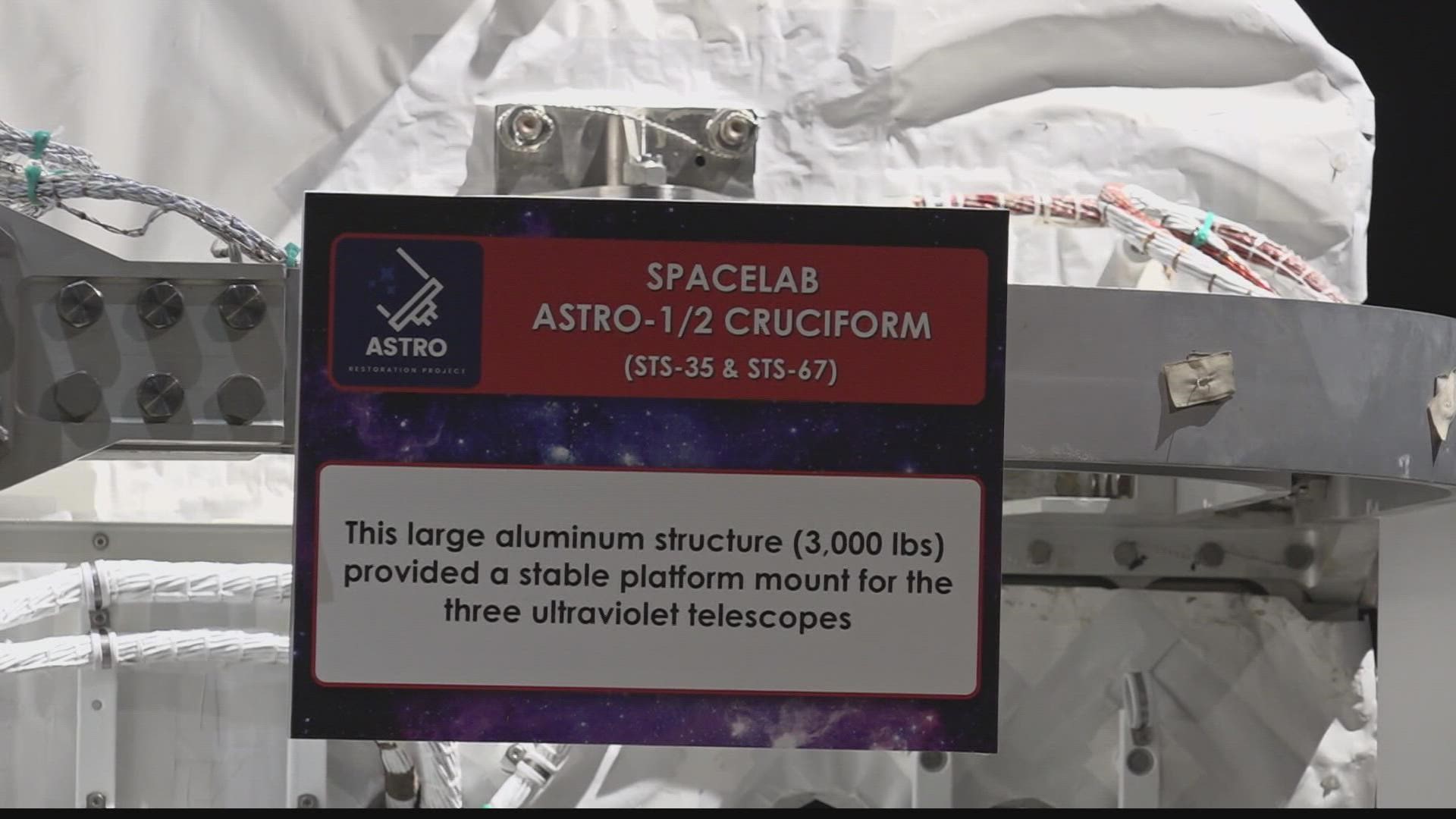HUNTSVILLE, Ala. — Marshall Space Flight Center volunteers celebrated today as workers re-installed the W.U.P.P.E telescope to the Astro Cruciform.
The crew have waited years for this moment and countless amounts of hours went into hunting down the parts needed for the spacecraft, as well as, installing those parts.
These particular parts are the same space lab pallets that were a part of Astro 1 and Astro 2.
The shuttle is one of three telescopes sitting in the city of Huntsville. Astro One launched aboard the space shuttle Columbia in 1980, which was dedicated to studying astrophysics. Astro Two launched aboard the space shuttle endeavor in March of 1995.
17-year old Jamison, also known as "Jay-Don", is a part of the Career Academies of Decatur and has helped work on the project. Upon seeing the finished project today, he exclaimed that "[he] feels a sense of accomplishment and pride to be able to contribute to something of this nature, something this historic."
According to the U.S. Space & Rocket Center:
The Astro Restoration Project began with a group of engineers rescuing Astro spaceflight hardware from a scrapyard. The project has grown to include dozens who worked on the original Astro missions from multiple entities, including NASA at Marshall Space Flight Center in Huntsville and Kennedy Space Center in Florida, and Teledyne Brown Engineering. The Rocket Center provided the group with the space to restore the artifact, and Teledyne Brown provided support for the project.
After more than a year of restoration work, the Astro cruciform is now ready to be reunited with the Wisconsin Ultraviolet Photo Polarimeter Experiment (WUPPE) telescope. The other telescopes, the Hopkins Ultraviolet Telescope (HUT) and Goddard Space Flight Center’s Ultraviolet Imaging Telescope (UIT), will be mounted on the cruciform later in 2022.
More than 120 scientific papers were written from the Astro-1 observations, and more than 150 technical papers were published in astronomy journals from data gathered during the Astro-2 mission. The telescopes returned unique information about hot stars, nebulae, remnants of supernovas and interstellar gas and dust in our galaxy, the Milky Way. The telescopes were also able to observe stars in other galaxies.
For more on the Astro Restoration Project, visit astrorestorationproject.org.
Make sure to make plans to visit the spacecraft while it is still in Huntsville before it makes its way up North to the Smithsonian in Washington DC.

